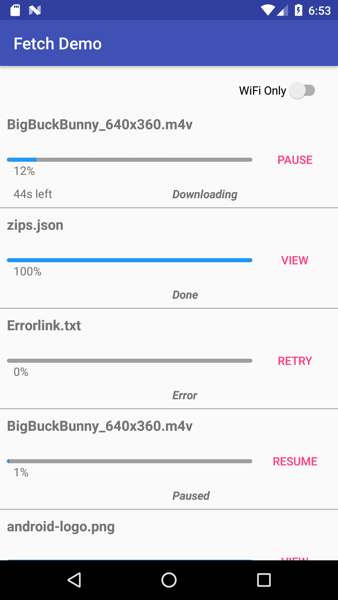Before we talk about the differences between these two commands, let's stress their similarities: both are used to download new data from a remote repository.
Free Rewards on Groceries Fetch Rewards. Download the free Fetch mobile app for Apple or Android, then follow the simple steps to pair it with your Fetch box so you can control and watch from anywhere. Watch Entertainment Channels. Subscribers to the Premium Channel Packs can enjoy the channels. on their mobile or tablet. Expand the number of screens at home over wifi, or use 3/4G to.
Downloading data is an essential step in your daily work - because the remote data you are looking at in your local repository is just a 'snapshot'. It's only as up-to-date as the last time you explicitly downloaded fresh data from the remote with 'fetch' or 'pull'. It's vital to keep this fact in mind when inspecting remote branches and commits!
Download Fetch Rewards Apk
Let's now look at the fine but important differences between 'fetch' and 'pull'.
The Git Cheat Sheet
No need to remember all those commands and parameters: get our popular 'Git Cheat Sheet' - for free!
Fetch
Download Fetch Rewards
git fetch really only downloads new data from a remote repository - but it doesn't integrate any of this new data into your working files. Fetch is great for getting a fresh view on all the things that happened in a remote repository.
Due to it's 'harmless' nature, you can rest assured: fetch will never manipulate, destroy, or screw up anything. This means you can never fetch often enough.
Pull
git pull, in contrast, is used with a different goal in mind: to update your current HEAD branch with the latest changes from the remote server. This means that pull not only downloads new data; it also directly integrates it into your current working copy files. This has a couple of consequences:
- Since 'git pull' tries to merge remote changes with your local ones, a so-called 'merge conflict' can occur. Check out our in-depth tutorial on How to deal with merge conflicts for more information.
- Like for many other actions, it's highly recommended to start a 'git pull' only with a clean working copy. This means that you should not have any uncommitted local changes before you pull. Use Git's Stash feature to save your local changes temporarily.
Tip
Auto-Fetching + Auto-Stashing in Tower
In case you are using the Tower Git client, you don't have to fetch manually all the time: Tower fetches for you background, regularly and automatically. And if you try to pull while having uncommitted local changes in your working copy, Tower will automatically offer to safely store those on a Stash for you:

Download Fetch Ftp
Download Fetch Rewards Apk
Learn More
- Check out the chapter Inspecting Remote Data in our free online book
- More frequently asked questions about Git & version control